The use of religious tablecloths on altar tables dates back to the fourth century. Later, in the 9th century, using three tablecloths became customary and common use since 1912.
The reason three altar cloths are used is that if the Blood of Christ were spilled by accident, it could be absorbed by the cloths before reaching the altar table.
The celebration of the Mass without altar cloths would only be authorized if it is the only way to give the faithful the option of attending Sunday Mass or giving viaticum to a dying person.
Altar tablecloths must be made of linen, polyester, cotton, or hemp, and great care must be taken with their cleaning. Before being used to celebrate Mass, they must be blessed by the bishop or someone with such a faculty.
The two lower tablecloths must cover the entire altar surface, both in length and width, being valid to using a single folded lower tablecloth that has to cover the altar twice.
The upper tablecloth must be unique and occupy the entire altar surface equally.
A chrismal will be placed under the three altar tablecloths, which is a linen tablecloth waxed on its lower side (with traces of wax candles) and which will be the exact size of the altar table. Its purpose is to avoid staining the three tablecloths with the oil used in the consecration and to keep them dry from the humidity of the most humid churches.
Altar tablecloths are usually embroidered with different Eucharistic motifs such as the chalice, spikes, bread, spikes, grapes, bunches of grapes, etc...
These embroideries can be accompanied by symbols of Christ, such as the JHS, the Sacred Host, the Lamb of God (Agnus Dei), etc; symbols of the Virgin Mary (Marian symbols), such as the monogram of the Virgin; figures of Saints such as the figure of Saint Joseph with the Child Jesus, etc.
The religious tablecloths we have for sale are typically decorated with a large embroidery on the front and a medium size on each side of the tablecloth.
The embroideries are made with threads of a wide variety of colors: gold, blue, silver, etc.
Also, liturgical tablecloths are often finished with lace.
The sale price of Mass tablecloths varies depending on the size, the fabric with which it is made, and the number and size of the embroideries. In our online store of religious articles, you can buy Altar tablecloths with three standard sizes : 2 x 1.5 m., 2.5 x 1.5 m., and 3 x 1.5 m.
The first of the measures indicated corresponds to the front (length) of the tablecloth, and the second measure corresponds to the bottom (width) of the Altar tablecloth. They can be made in any size to fit altar tables.
In addition to the standard embroidery we have for our tablecloths, custom embroidery can be done.
Liturgical colors are part of the symbolism that permeates all the ornaments and cloths used in parish celebrations.
Traditionally, the color used in the fabric for making altar tablecloths was white. This tradition has evolved, and many priests use different colors depending on the time of the liturgical calendar.
White is the traditional color of altar cloths and linens.
White is a color loaded with meaning within the Catholic Church.
White is a significant symbol in chasubles and priestly attire in general. It is the color of Easter joy, happiness, and life.
Using white-colored cloths in numerous liturgical celebrations is especially recommended. We can highlight Christmas and Easter Vigil, dates on which the Catholic Church joyfully celebrates the Birth and Resurrection of Christ.
Similarly, white is also a color related to purity, thus deeply linked with the figure of the Virgin Mary. It is common for priests to use white ornaments and cloths on all Marian festivities.
Purple within the Catholic Church is the color of mourning, reflection on mortality, repentance, and penance.
In Catholic liturgy, cloths woven with purple fabric are usually placed on the altar table during Advent and Lent. Times of preparation and inner reflection.
Red symbolizes the blood shed by Christ and the burning fire of Christian charity.
Red-colored cloths are used during celebrations related to the Passion of Our Lord Jesus Christ during Holy Week, especially on Palm Sunday and Good Friday. It is also usual to place cloths on altars in celebrations linked to the Holy Spirit, such as Pentecost, and in feasts of Apostles, Evangelists, and those Saints who were martyrs.
Recently, red clothes have been linked to Christmas celebrations. This is a recent tradition not related to liturgical celebrations.
In the colors of liturgical ornaments, green is a symbol of hope and life. Generally, green ornaments are used when there are no particular celebrations, that is, what is known as the ordinary of the Liturgical Year. Green chasubles are used in liturgical celebrations that do not commemorate any particular festivity.
Despite this, it is not customary to use green cloths; white cloths are more common.
Online sale of Catholic Church Altar tablecloths. Ornaments decorated with lace and liturgical embroidery. Buying a tablecloth for the Altar table is very simple. All you have to do is select the embroidery you like best, choose a size, and click "Add to cart".
The Communion Table Cloth is one of the products that adds beauty to the celebration of the Liturgy during Holy Mass by decorating the tables of the churches.
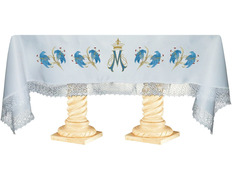
Ref: 84R020
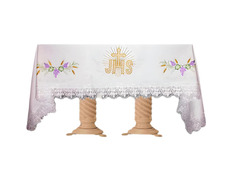
Ref: 1F8636
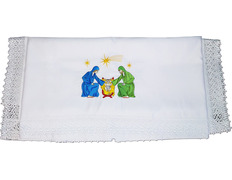
Ref: 84B20601
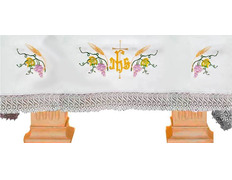
Ref: 84F007
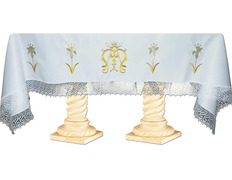
Ref: 84F004
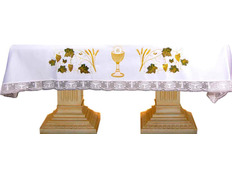
Ref: 84R001
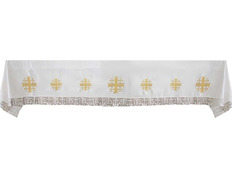
Ref: 84F002
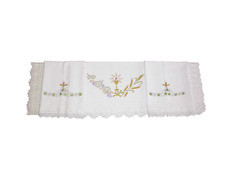
Ref: 1F8600
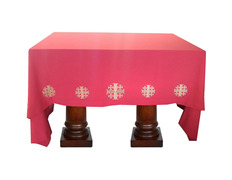
Ref: 84C002
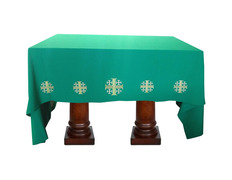
Ref: 84C002
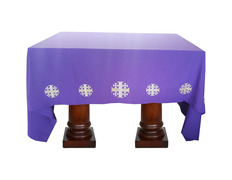
Ref: 84C002
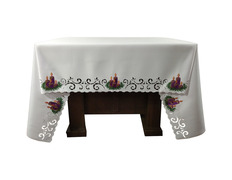
Ref: 169FTC301
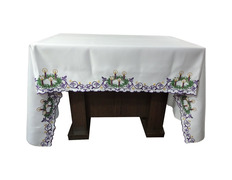
Ref: 169FTC242

Ref: 84R003C

Ref: 84R003C
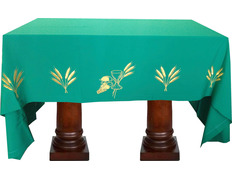
Ref: 84R003C
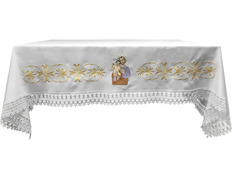
Ref: 84B061
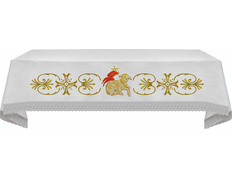
Ref: 84F013
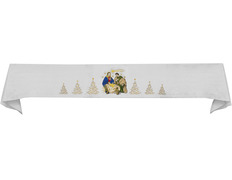
Ref: 84B027
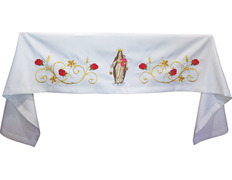
Ref: 84B015
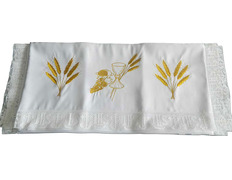
Ref: 84R003
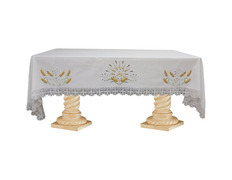
Ref: 1F8656